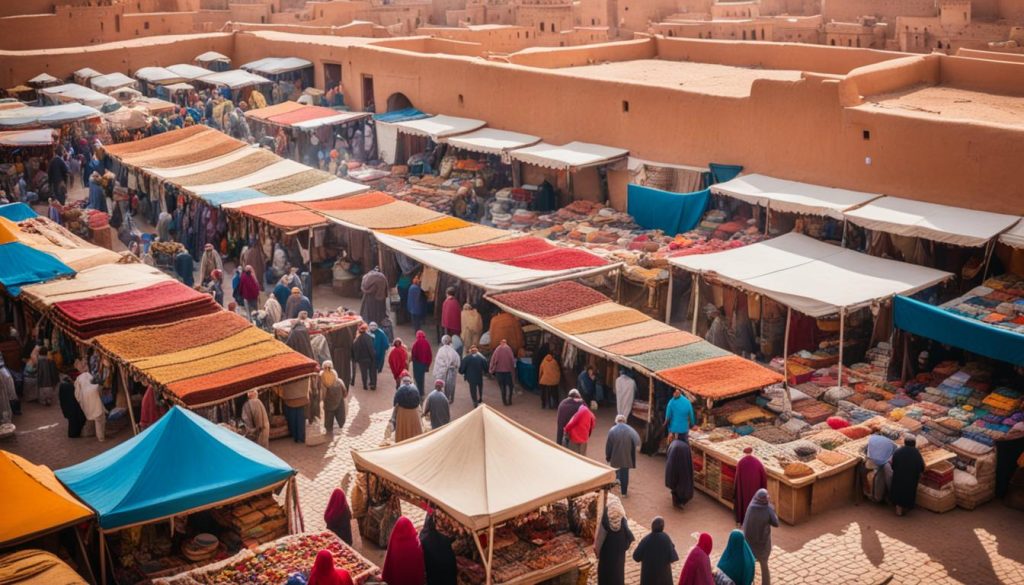Did you know that the top 30 countries and regions for cultural tourism this year were chosen for their amazing festivals, delicious food, and history-rich handicrafts1? These places include everywhere from Colombia’s Antioquia to Hawaii’s Big Island. They let visitors dive into local life and meet artisans who are keeping old traditions alive1.
Artisans all over the globe have been making stunning, useful, and culturally important items for years. Whether it’s knife makers in Tibet or guitar crafters in Madrid, these top artisans show off local talent and skills. Getting to see their work is a big part of cultural immersion travel. It helps visitors learn about local customs and really understand the places they’re visiting.
Key Takeaways
- Explore the top 30 cultural tourism destinations known for their lively festivals, tasty food, and historical crafts.
- Find the handmade crafts of skilled artisans, like glassblowing in Murano or making knives in Tibet, to see centuries-old traditions.
- Get to know local people through authentic adventures and community-based tourism.
- Help keep cultural traditions alive by supporting and engaging with local crafts and practices while traveling.
- Travelers of all ages can enjoy accessible adventures created especially for seniors who love cultural exchange.
Exploring the Art of Glassblowing in Murano, Italy
Murano is a small island just a short boat ride from Venice. It’s famous for its long history of glassblowing2. The art of glassblowing there dates back to the 8th century. It started in the Middle East around 300 BC. Today, Murano is still a key place for making Venetian glass well-known across the globe3.
The Ancient Tradition of Venetian Glass
Murano became the center of glassblowing in the 13th century. It was when glassworks from Venice moved to the island4. The local glass artisans have since honed their skills. They use traditional methods to create beautiful handmade pieces3.
Witnessing the Craft in Action
When you visit Murano, you can watch the glassblowers make glass up close2. You’ll see them shaping molten glass with a steel tube. They also use a table to shape it and blow air through the tube to form the glass2. These demonstrations give you an insight into this ancient and beautiful craft2.
“The dance of the glassblower, the hypnotic rhythm of their movements, and the transformation of molten glass into something of breathtaking beauty – it’s a sight that captivates the soul.”
Tibetan Knife Makers: Preserving a Cultural Legacy
In the heart of the Tibetan Plateau, a group of skilled artisans keeps an old tradition alive5. They learn from past generations to make Tibetan knives. These knives are both useful tools and a way to honor their culture.
The tool known as the Phurbu has long been part of life in the Himalayas6. Making them is detailed work. The craftsmen shape copper for the blade and use animal horns, wood, and metal for the handles5. They also craft intricate sheaths from hides and horn to protect the sharp blades. This protects their work and shows its beauty.
During the 20th century, this skill faced hard times. But, Tibetan knife makers stayed strong6. They got help from the Chinese government and kept working hard. Now, Tibetan knife making remains a key part of the area’s culture5.
| Tibetan Knife Makers | Artisanal Crafts | Cultural Preservation | Traditional Skills |
|---|---|---|---|
| Tibetan Knife Making | Copper Blades, Horn Handles | Centuries-Old Tradition | Meticulous Craftsmanship |
| Phurbu Knives | Leather, Wood, Metal Sheaths | Chinese Government Support | Teachings of Forefathers |
| Artisan Persistence | Utilitarian and Decorative | Cultural Identity Preservation | Razor-Sharp Blades |

The Tibetan knife makers’ dedication to their craft ensures the preservation of a vital cultural legacy, one blade at a time.
“The Tibetan knife is not just a tool, it’s a reflection of our history, our values, and our identity as a people.” – Tashi Dhondup, Master Knife Maker
Moroccan Leather Tanneries: A Vibrant Display of Artistry
Explore the well-known Moroccan leather tanneries in Fez, Morocco. These places are a living history of art from the 11th century. They offer a unique look at a timeless craft7.
The Fez Tannery: A Colorful Spectacle
The Chouara Tannery is the largest in Fez, Morocco, and a key part of its leather industry7. Here, you’ll find artisans dyeing leather in big pools, creating a colorful scene. They use traditional methods that have lasted over a thousand years7.
This amazing process not only helps Fez’s economy but also supports the local community with jobs7. It keeps an old craft alive. Walking around, you can see and feel the tannery’s unique beauty. It’s a special place with lots of activity and history7.
You can buy beautiful leather items here. And you can learn how the tanning process makes Moroccan leather so special7. It’s a great way to see and understand this ancient craft.
Fez, where the Chouara Tannery is, is easy to reach for many tourists. It has an airport and good flights to major European cities7. This makes it perfect for anyone wanting to dive into a culture where the old and new mix7.
When you visit the Chouara Tannery, you step into a world of art and tradition. It’s a special place that will stick with you from your travels789.
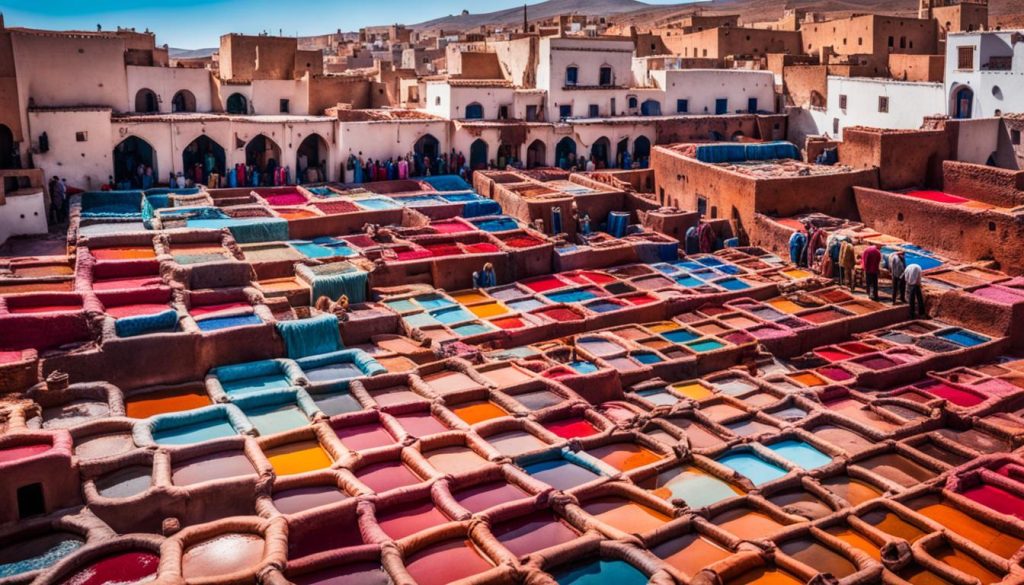
Ikebana: The Japanese Art of Flower Arrangement
Dive into the wonderful world of Ikebana, the Japanese way of arranging flowers. It’s not like usual floral designs. Ikebana sees plants and humans as one. The health of the plant matters as much as the final look10.
Translated as “flowers kept alive,” Ikebana dates back centuries in Japan. It follows strict rules and focuses on nature. Ikebana artists often work quietly to better connect with nature10.
Nature and Humanity in Harmony
Ikebana is about balance and simplicity. Instead of a bunch of flowers, it uses a small number of plants. This creates a powerful yet simple scene10.
For Ikebana artists, arranging flowers is more than decor. It’s about showing a deep understanding of nature. They look at the container, how they place the stems, and the shape of the arrangement. This aims to blend nature and human creativity perfectly11.
Ikebana is very much alive and loved worldwide. It’s taught in Japan and shown on TV. This ancient art’s beauty and value are kept alive for new generations to enjoy10.
“Ikebana is not just about flowers, but about the philosophy behind it – the relationship between humanity and nature.”
Whether you love Ikebana or are new to it, explore this peaceful world. Understand its unique mix of nature and human touch. Let Ikebana’s timeless beauty spark your creative side11.
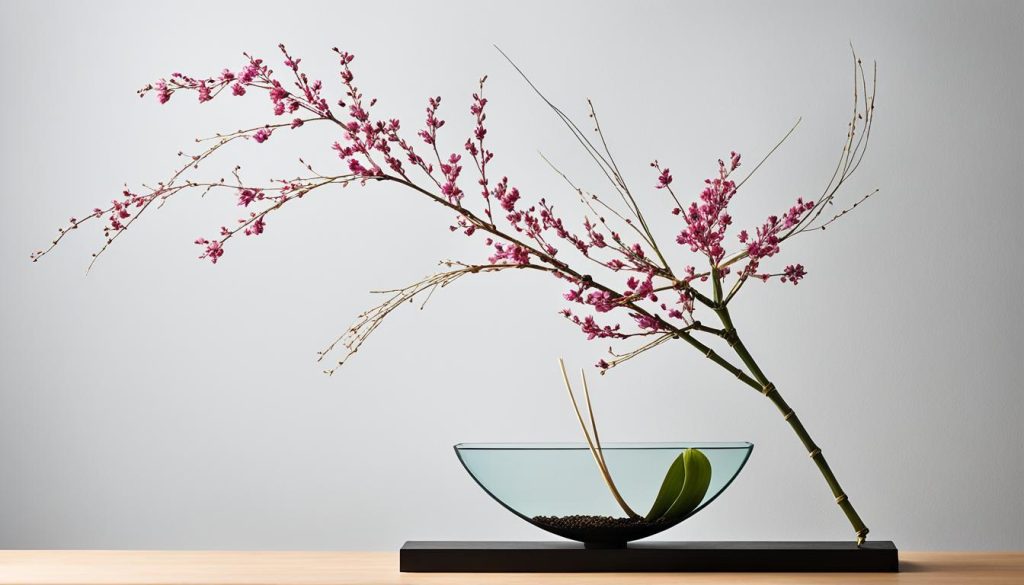
Want to learn Ikebana in Kyoto, Japan? Consider a workshop with Sakiko Kamata. These hands-on classes are a great way to understand Ikebana’s meaning and techniques12.
| Workshop Details | Information |
|---|---|
| Duration | 1 hour12 |
| Session Times | 11:00 AM, 1:00 PM, and 3:00 PM12 |
| Cancellation Policy | |
| Maximum Participants | 512 |
| Skill Level | Suitable for all, from beginners to enthusiasts12 |
| Language | English and Japanese12 |
| Workshop Outcome | Participants take home their floral creations12 |
| Age Suitability | All ages, with children under 12 accompanied by an adult12 |
| Meeting Point | Gensoan, 301 Ogisakayacho, Shimogyo Ward, Kyoto, 600-809512 |
Explore Ikebana, where nature meets art in a serene way. It’s a chance to find beauty in nature and your own creativity. Join us to experience the beauty of Ikebana11.
Flamenco Guitars: Handcrafted Instruments of Passion
The melodious sound of a flamenco guitar comes from a long line of skilled makers in Madrid, Spain. These guitars are made by hand using wood like rosewood and cypress. They are more than just tools for music; they are art pieces that show Spain’s culture13.
The Luthiers of Madrid
In Madrid’s guitar workshops, expert makers carefully create each flamenco guitar. They put their heart and soul into each piece. These guitars are not only beautiful but also make the unique sounds of flamenco music13.
Flamenco fusion, started in the 1970s, mixed different music styles with flamenco. This mix included jazz, salsa, and bossa nova13. Modern artists like Raimundo Amador and Rosario Flores have mixed flamenco with new sounds. They are making flamenco music even more diverse and interesting13.
Seeing the luthiers work in Madrid is a special experience. You get to see them make these special guitars. Their love and hard work keep the flamenco guitar special in Spain’s culture131415.,,
| Flamenco Guitar Workshops in Madrid | Specialties | Notable Luthiers |
|---|---|---|
| Casa Ramírez | Precision craftsmanship, traditional techniques | Antonio Ramírez |
| Guitarras Hermanos Conde | Innovative designs, blend of tradition and modernity | José and Emilio Conde |
| Taller de Guitarras Alegría | Handcrafted instruments, focus on tone and playability | Juan Alegría |
| Guitarras Alhambra | Custom-made guitars, attention to detail | Vicente Arias |
Flamenco guitars carry the story of Spain’s cultural heritage. Madrid’s luthiers keep this cultural legacy alive through their work. Their guitars enchant people all over the world. They play a big part in keeping flamenco music alive and evolving131415.,,
Calligraphy: The Art of Beautiful Writing
Calligraphy is the amazing art of creating beautiful lettering with a pen or brush. It has intrigued people all over the world for thousands of years. Many places like Europe, East Asia, and the Islamic world have seen this art. In Pakistan, this craft is especially alive, with many skilled calligraphers continuing its legacy16.
Pakistan’s Renowned Calligraphers
Khurshid Gohar Galam is one of the most respected calligraphers globally. He comes from Pakistan and has mastered almost 500 calligraphic styles. His work decorates important places in Pakistan, highlighting the deep cultural heritage of the country16.
In Pakistan, calligraphy is not just celebrated but also passed on to new generations. The country is famous for its exceptional calligraphers. They combine technical skill with deep cultural meaning, preserving this ancient art form for future generations to appreciate16.
“Calligraphy is not just about the beauty of the script, but the soul and spirit that it embodies. It is a reflection of our cultural identity and a living testament to the rich artistic traditions of Pakistan.”
– Khurshid Gohar Galam, renowned Pakistani calligrapher
https://tunekong.com/ultimate-outdoor-furniture-hacks-style-comfort-and-durability-combined-19/
Pakistan’s calligraphic works shine on walls and pages across the nation. They represent the lasting beauty and power of this art. As people explore Pakistan, they witness the devotion of the country’s artisans to their craft and cultural history16.

The calligraphic traditions of Pakistan are rich and diverse. From Nastaliq script to Devanagari, each style tells a story of the nation’s culture. As you learn more about this art, you’ll gain a profound respect for the talent and effort behind each piece16.
If you are intrigued by cultural arts, a visit through Pakistan’s calligraphic world will surely impress you16.
For an in-depth look at handwriting and language, check out: The Art of Handwriting for Language. And for a deep dive into Japanese arts, visit: Crash Course: The Japanese Arts. For immersive cultural experiences in Morocco, browse IGAI Fez16.
Turkish Rug Weaving: A Centuries-Old Tradition
Step into the world of Turkish rug weaving. It’s a tradition that has lasted over 3,000 years17. Each rug tells a story of Turkey’s rich culture and the hands that crafted it. Its intricate designs and colors are a true art form.
Visit Cappadocia, a place known for its ancient pottery and weaving17. It’s also where you can see unforgettable balloon rides over its stunning landscapes. In the Southeast, visit quiet Kurdish villages. Here, people welcome you with open arms. You can even see how things like traditional ice cream are made in Maras17.
In Turkey, your journey brings you to the Grand Bazaar in Istanbul18. Here, thousands of shops display Turkish craft at its best. Oh, and don’t miss the historic hamams. They show the blend of old skills with new ideas. It’s a place where you see tradition live on19.
After this journey, Turkish rug weaving won’t just be a craft to you. It’ll be a story of generations and a country’s deep cultural roots. Prepare to be amazed by the beauty and tradition found in every Turkish rug.

Cultural immersion travel: Discovering New Zealand’s Jade Carvers
New Zealand’s South Island is home to a rich cultural heritage. The Māori people have shaped this land long before Europeans came. They are known for their expert jade carvings, with each piece having a deep meaning. These carvings are central to Māori heritage, passed down for generations.
The town of Hokitika is at the heart of this art. Here, master jade carvers showcase their skills. Travelers can take part in Demonstrations and workshops to learn the ancient carving techniques20. This hands-on experience allows a deep dive into Māori culture.
New Zealand not only boasts jade carving but also a diverse landscape steeped in Māori history. Places like Waitangi Treaty Grounds and Rotorua are rich in culture. By embracing these experiences, travelers connect deeply with the land and its heritage21. This creates lasting memories.
“Carving jade is a sacred art, with each piece representing the story and spirit of the land. It is a privilege to share this tradition with visitors from around the world.”
– Hemi, Master Jade Carver in Hokitika
Culturally immersing in New Zealand is a special journey. It covers not just jade but the entire Māori cultural landscape. Let this journey transform you as you explore the country’s heritage.
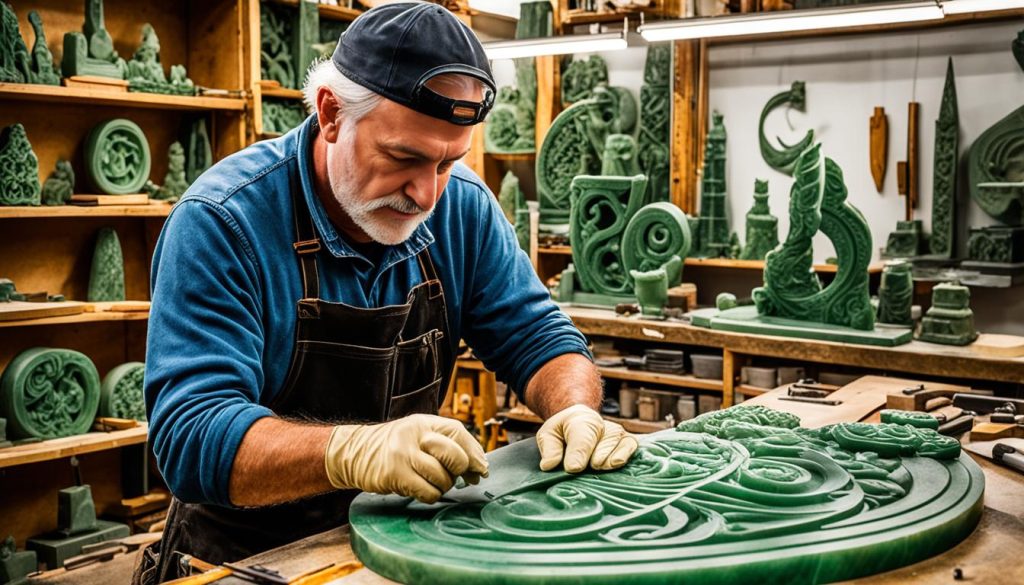
Deep in New Zealand, you’ll find beauty and tradition. Tours with an average group of 24 offer an all-encompassing experience. You can enjoy a Māori concert and a traditional meal, visit wineries, and carve jade in Hokitika20. Dive deep into New Zealand’s culture and let its heritage charm you2122.
Azulejos: Portugal’s Stunning Tile Art
Azulejos is a highlight of Portugal’s art scene, blending tradition and modern design. These glazed tiles, centuries old, beautify the country from palaces to cozy cafes23.
Talented tile makers today fuse old and new techniques in Portugal. Their work not only respects tradition but also adds new life to this rich art form24.
Blending Tradition with Modernity
Places like Lisbon and Porto offer rich insights on Azulejos. The São Bento Railway Station in Porto showcases over 20,000 hand-painted tiles25. In Lisbon, the National Azulejo Museum holds a vast, centuries-old collection25.
This art’s legacy shines in both old and new contexts across Portugal. Examples include the Church of São Vicente de Fora in Lisbon and the Convent of Christ in Tomar. These sites beautifully depict Portugal’s past with Azulejos25.
In Porto, the Capela das Almas’s entire walls are covered in blue Azulejos25. This highlights the craft’s ability to uplift any space, no matter how simple, with its beauty24.
As you discover Portugal, you’ll see how Azulejos reflect its deep cultural roots. They not only decorate but embody centuries of artisanal tradition23.

From historic monuments to new designs, Azulejos showcase the best of artisanal work. They bridge the past and present with grace, celebrating cultural traditions that endure25.
Origami: The Japanese Art of Paper Folding
Paper folding is a worldwide art form that dates back centuries. But in Japan, origami has become the most iconic. Combining art, science, and math, this Japanese tradition remains a beloved art, making it a unique part of their culture.
Japanese society has always found value in origami’s designs and meanings. From the popular paper crane to symbols used in funerals26, origami has deep roots. It arrived in Japan from China around 600 A.D. As paper became more available, it grew in popularity. The first how-to book for origami was published in 1797.
Origami’s complex designs and meanings still delight fans today, keeping the art alive27. As more people travel to Japan – 19 million in 2015 to a projected 40 million by 2024 – origami and other cultural activities gain popularity. This reflects Japan’s rising interest as a travel destination.
28 Twelve Georgia Tech students recently visited Japan for a week, focusing on origami principles and its engineering side28. Their trip included cultural activities, lectures, and an origami contest. It deepened their knowledge and appreciation of this ancient art.
26 Origami paper comes in many sizes, from 2.5 cm to 25 cm. Special types like foil-backed or washi paper are used. Techniques such as Modular or Wet-Folding are common. Japan has both simple designs and complex models for all skill levels.
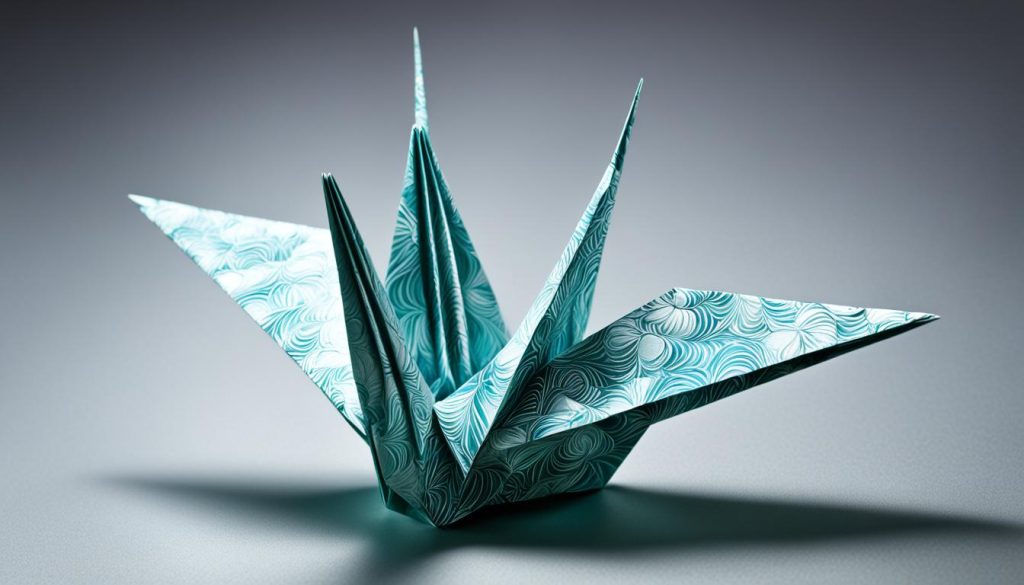
The mesmerizing art of origami captivates people worldwide. It maintains a balance of creativity with science and math, fitting uniquely into Japan’s cultural story. From simple cranes to detailed creations, origami celebrates Japan’s creative and cultural spirit.
“Origami is not just paper folding, it’s paper thinking.” – Akira Yoshizawa, considered the grand master of modern origami26.
The tradition of paper folding in Japan is an essential part of its culture. The intricate designs and growing appeal to visitors show its timelessness. Origami is more than folding paper; it’s a lasting symbol of Japan’s artistic and cultural prowess.
Uncovering the Vibrant Handicrafts of Bali
Beyond the famous beaches, Bali is known for its cultural wealth seen in its colorful handicrafts. Woodcarving and furniture making are key traditional crafts. Skilled artisans use teak, jackfruit, and mahogany to create detailed mythological sculptures and beautiful furniture in private workshops29.
Woodcarving and Furniture Making
In Bali, you can learn all about woodcarving and furniture making. These crafts are deeply tied to Balinese culture. Watching these works being made helps you understand and respect the island’s long history of artisan crafts29.
Bali is rich with culture, offering chances to dive into its traditions. Getting involved in local ways helps you grow personally. This might involve learning crafts, cooking local food, or joining in rituals30.
Bali, home to 4.5 million people, uses the ancient Subak system for irrigation. This system, a UNESCO Heritage site, shows how culture is integrated with nature31. Rice is central to Balinese life, from daily meals to important ceremonies31.
Visiting Bali’s rural areas, like Penglipuran, lets you see daily traditions up close. Supporting local artisans, for example by making batik, helps keep old crafts alive29. These experiences in Bali are more than just tourism; they’re about being part of local life29.
“Bali’s vibrant handicrafts are a testament to the island’s rich cultural heritage, inviting visitors to immerse themselves in the skilled artistry and time-honored traditions that give these works their unique character.”
Cultural immersion in Bali means real, off-the-beaten-path experiences. You can be part of local ceremonies, get to know the community, and pick up the language. These steps open doors to cultural insights and personal growth30.
Making local friends in Bali offers in-depth looks at daily life and culture. This leads to life lessons about diversity and respect30.

Through immersive experiences, you’ll deeply understand Balinese society and develop respect. These encounters offer valuable moments for personal reflection30.
Conclusion
The world is full of talented people, keeping old traditions alive while bringing something new. Whether it’s the glassblowers in Murano or the jade carvers in New Zealand, each artist shows us their culture. Seeking these experiences out helps you truly understand a place. This way, your travels become much more meaningful and unforgettable32.
Research tells us that diving into a new culture makes us more understanding and open-minded by up to 25%33. People who get involved in local customs are also 30% more likely to find new things they love. Additionally, taking part in cultural events boosts your appreciation for different ways of living, by 20%33.
When you start immersing yourself in a place’s culture, it’s key to connect with the locals and pick up some of their language. These steps, along with embracing everything each place has to offer, ensure your trip is unforgettable. Plus, it helps keep the rich traditions alive. Immersive travel isn’t just about famous landmarks. It’s about diving into culture and enjoying what artisans create and local life. This way, you see the world in a new, beautiful light34.
FAQ
What are some of the best places in the world to immerse yourself in local crafts and artisanal experiences?
The write-up mentions some top spots known for their craftsmen and culture. These include Murano, Italy for glassblowing and Tibet for knife making. Morocco is famed for leather tanning, and Japan for Ikebana flower arrangement. You can also check out Spain for flamenco guitar making and Pakistan for calligraphy. Don’t forget Turkey for rug weaving, New Zealand for jade carving, and Portugal for Azulejo tile art. Japan also stands out for origami, and Bali for woodcarving and furniture making.
What is the significance of the glassblowing tradition in Murano, Italy?
The glassblowing tradition in Murano started in the 8th century. It uses techniques from the Middle East from 300 BC. Today, Murano is a key place for glass art. Artists there make stunning glass items using old ways. Visitors can see these artists in action, making it a special place.
How have Tibetan knife makers preserved their cultural legacy?
Even with troubles in the 20th century, Tibetan knife makers kept their old ways. They work with traditional materials like copper, wood, and horns. The Chinese government helps these talented makers. Because of this, they maintain their cultural heritage through their knives.
What makes the Moroccan leather tanneries in Fez a unique cultural experience?
The Chouara Tannery in Fez is a unique place. It shows colorful artistry, with artisans treating skins in natural dyes. The process involves a lot of people and it looks amazing. The way they dry the treated skins on roofs is a special sight to see.
How does the Japanese art of Ikebana differ from traditional flower arrangements?
Ikebana is not like your usual flower arrangement. It focuses on keeping the plant alive. Artists do this in silence to understand nature better. They follow special rules, like using only living parts, to make beautiful and meaningful displays.
What makes the craft of flamenco guitar making in Madrid, Spain, so unique?
The craft of making flamenco guitars has a long history in Madrid. Their guitars use materials like rosewood and spruce. Skilled experts make these guitars beautiful and functional. Tourists can see these experts at work, learning about their detailed making process.
Who is Khurshid Gohar Galam, and why is his work significant in the world of calligraphy?
Khurshid Gohar Galam stands out as a famous calligrapher worldwide. He has almost 500 different calligraphy styles. You can see his work in many important places in Pakistan. His art keeps alive the ancient tradition of calligraphy. It shows the beauty and skill of this kind of art.
What makes Turkish rug weaving a unique and culturally significant craft?
Turkish rugs are special because they are very strong. Makers use various materials like wool and silk. The designs in these rugs are very detailed. They show the talent and culture of Turkish rug weavers.
How can visitors experience the cultural significance of jade carving in New Zealand?
Hokitika in New Zealand’s South Island is the place to go for jade carving. Visitors can see art shows and join workshops. They will learn about the deep meanings in the carvings. It’s a great way to really get to know the culture.
How are the traditional Portuguese Azulejo tiles being incorporated into modern architecture and design?
The Azulejo tiles in Portugal have a long story. Now, places like Lisbon mix them with modern styles. Tile makers today use old and new ways to make beautiful tiles. Visiting this place lets you see this mix of old and new firsthand.
What is the significance of origami in Japanese culture?
Origami is a very old art in Japan, teaching everything from hope to respectful traditions. Even in funerals, origami has a special role. The fine details and special meanings in each design are what keeps it important and interesting.
What are some of the prominent traditional crafts found in Bali?
Bali is well-known for its crafts, especially woodcarving and furniture. Here, you can visit workshops and see artists at work. They make beautiful sculptures and furniture with care from teak and mahogany. It’s a hands-on way to experience Balinese art and culture.

